What Is an Asian Beetle?
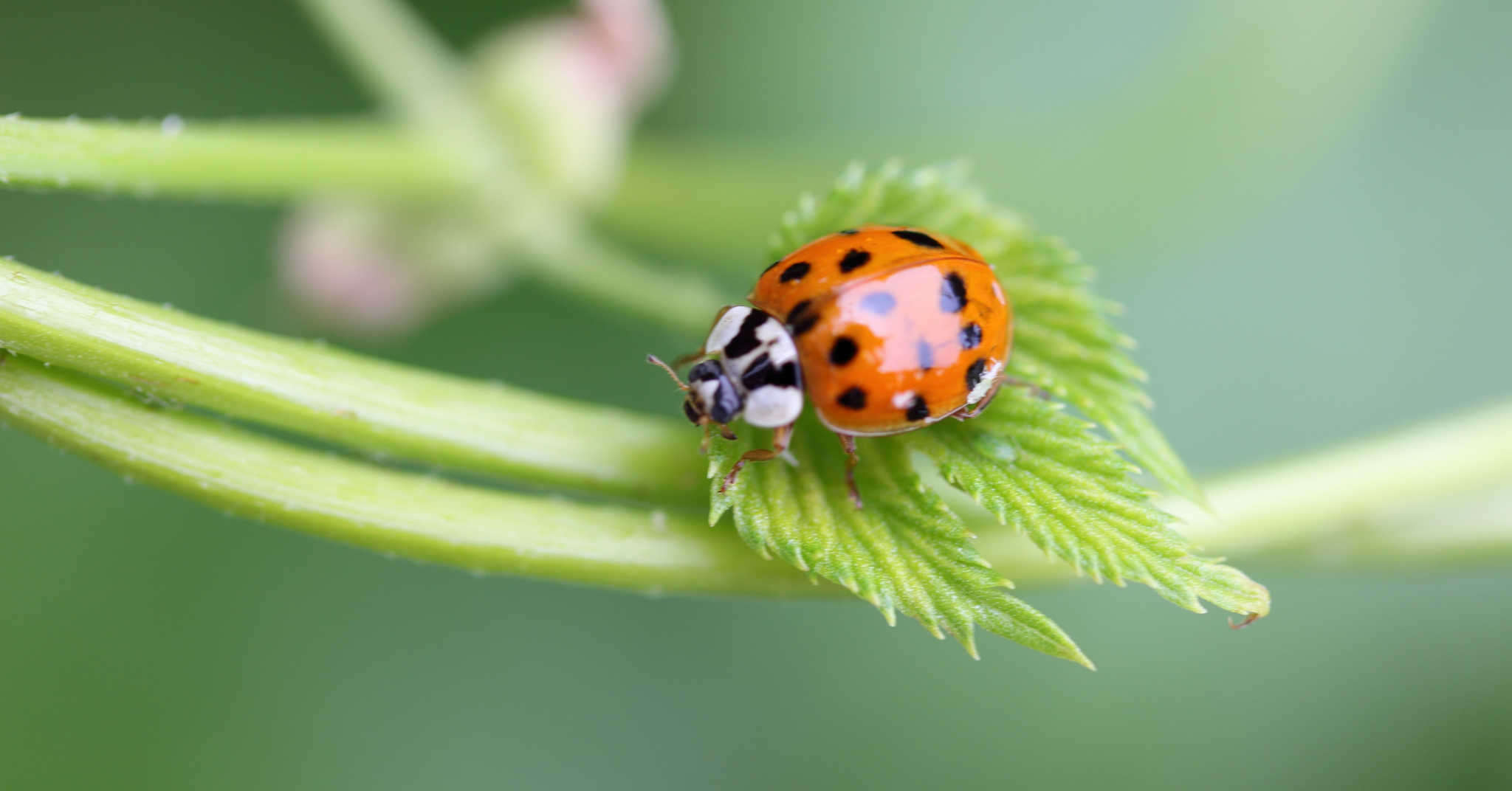
Meet the Asian beetle—a not-so-friendly relative of the ladybug. In many regions, these invasive insects seek shelter for winter and can be a huge pest problem.
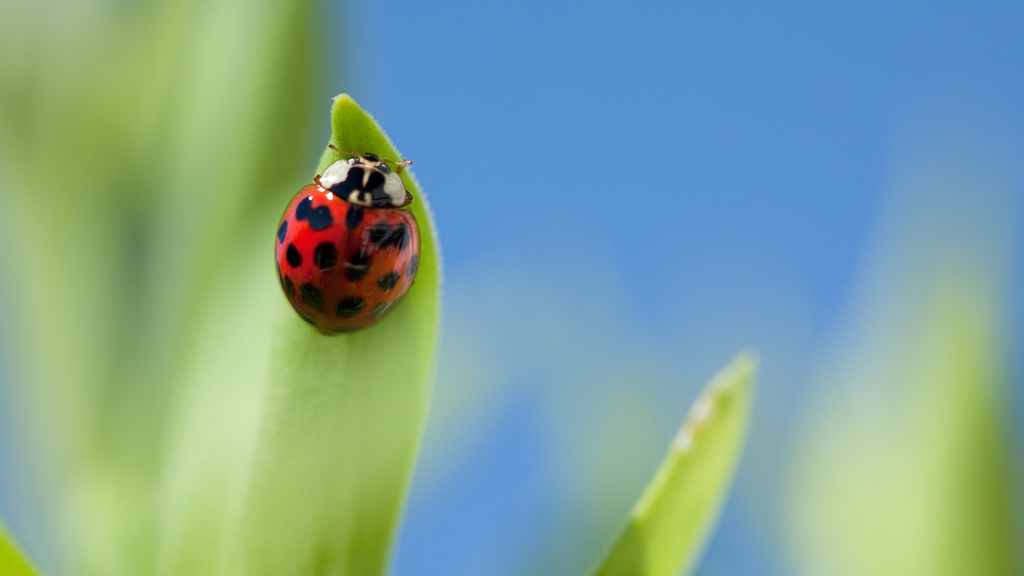
WHAT ARE ASIAN BEETLES?
Asian beetles (Harmonia axyridis) are small, rounded, spotted insects that show up in a variety of colors including red, orange, yellow, and black. They’re also known as Asian lady beetles. These insects are similar in appearance to common red ladybugs (Coccinella septempunctata), but there are some distinct differences.
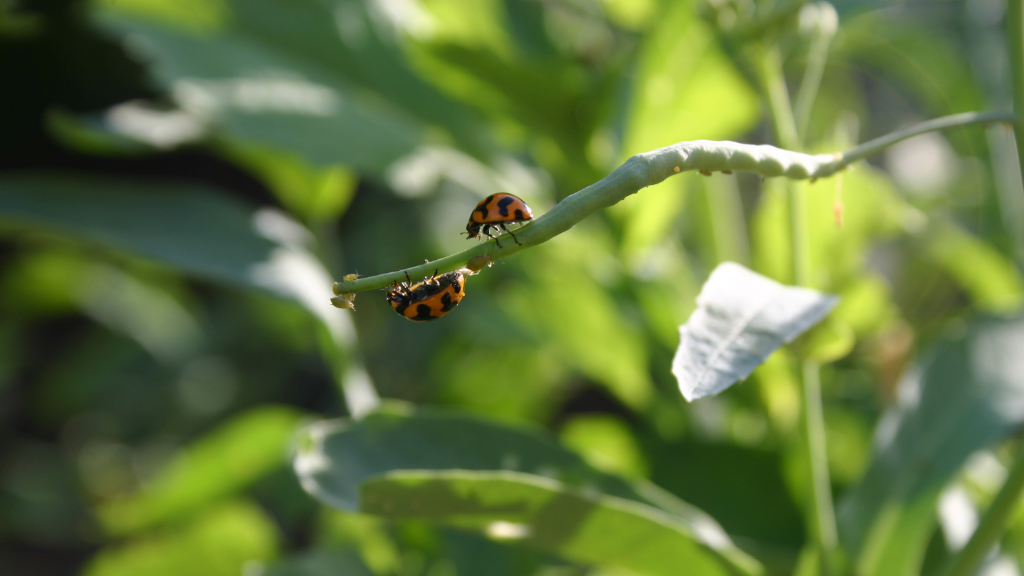
WHERE DO ASIAN BEETLES LIVE?
Although native to China, the Asian beetle was first introduced to the United States in 1916 in an attempt to control crop-eating aphids. By the late 1980s, the Asian beetle population had grown exponentially, and since then they have spread throughout most of the country.
Asian lady beetles prefer to live in grassy, open areas or crop fields where their prey is most often found. Asian beetles mainly feed on small insects like aphids and mealy bugs.
VINEYARD PESTS
The Asian beetle is also commonly found in vineyards and will often contaminate and adversely affect the taste of wine. At the beginning of their life cycle, Asian lady beetle larvae feed on vineyard aphids and mites and are generally non-detrimental to the crop. But as grapes ripen and become ready for harvesting, Asian beetle adults are plentiful and are sometimes collected along with the grapes. As they get scooped up, they secrete their foul-smelling defense chemical in the process, which ends up getting mixed into the crushed grapes.
Sometimes, when the flavor contamination from Asian beetles is significant, entire batches of wine products have to be disposed of.
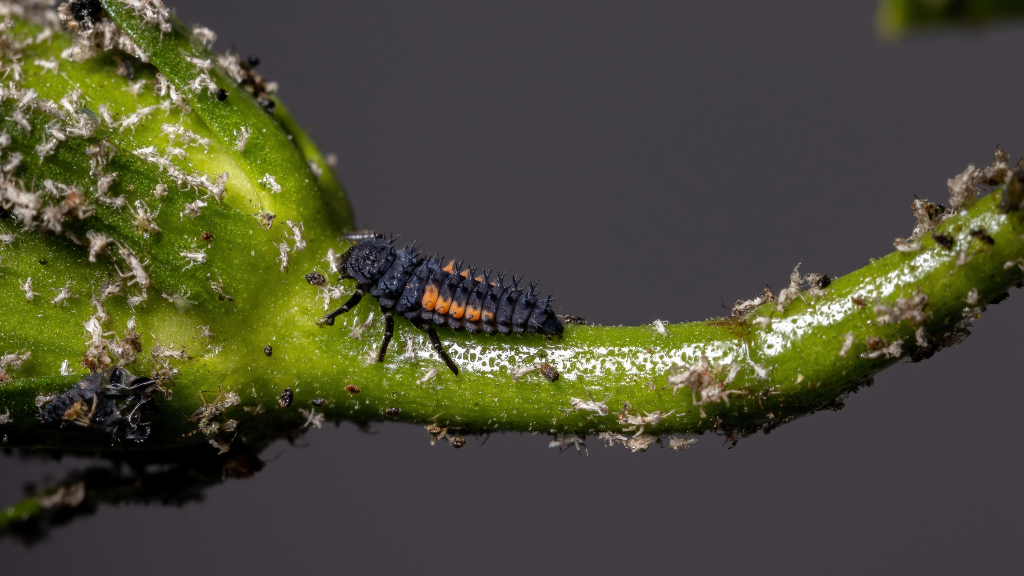
ASIAN BEETLE LIFE CYCLE
The Asian lady beetle life cycle takes about a month to complete. Larvae hatch out of tiny yellow eggs and molt several times before reaching adulthood. In the larval stage, these insects are long, black, and spiky, often with an orange or yellow marking on the sides of the body. Pupae look more similar to adult beetles but have bumpier armor-like shells.
Larvae and pupae eat the same diet as adults (soft-bodied insects), and adults can reach a lifespan of up to three years—especially when they are successful at hibernating during the winter months.
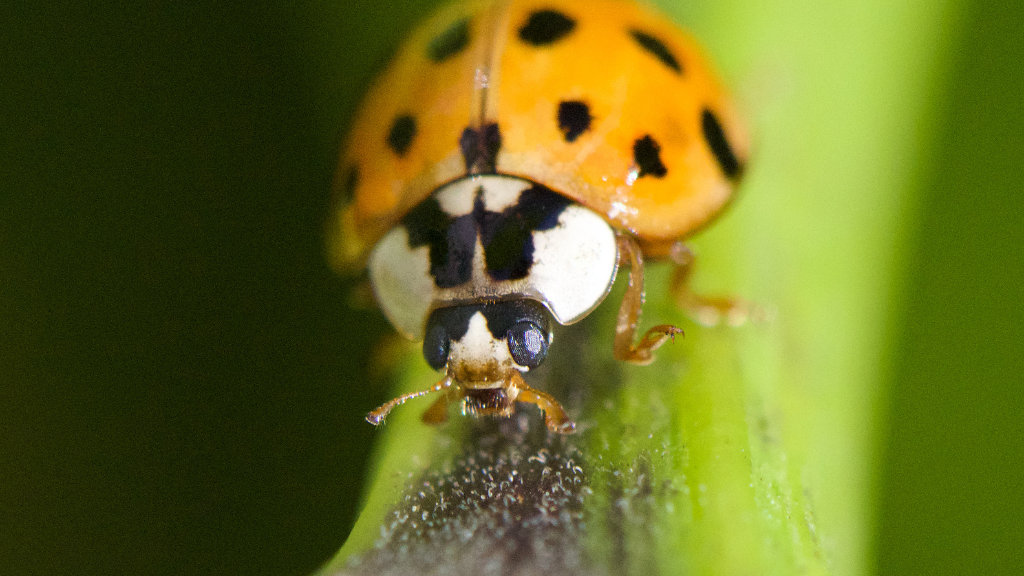
DO ASIAN BEETLES BITE?
Yes, Asian beetles can bite humans if disturbed. Most of the time, these insects end up biting people when they get stuck between skin and clothing. These bites feel like a sharp pinprick and cause redness and irritation.
Asian lady beetles also emit a foul-smelling yellow liquid when threatened. The secretion is an infusion of their blood along with a defense chemical. This liquid is known to stain surfaces like carpets and walls and can cause serious allergic reactions in people, including those who have never experienced allergies to other insects or animals.

WHAT’S THE DIFFERENCE BETWEEN ASIAN LADY BEETLES AND LADYBUGS?
Often, Asian beetles and ladybugs look so similar that it can be hard to tell them apart. Here are some of the key differences to look for:
ASIAN LADY BEETLE (Harmonia axyridis)
- Typically a bit larger than ladybugs.
- Comes in a variety of colors.
- May or may not have spots; can have up to 19 black spots.
- Has brown legs.
- Usually has an “m” marking on the head.
- Larvae look like long, black, spiky insects with orange stripes on the sides.
LADYBUG (Coccinella septempunctata)
- Usually red in color.
- Has 7 spots.
- Has black legs.
- No “m” marking.
- Less likely to overwinter in homes.
- Larvae are usually wider in appearance, more gray than black, and have yellow spots.
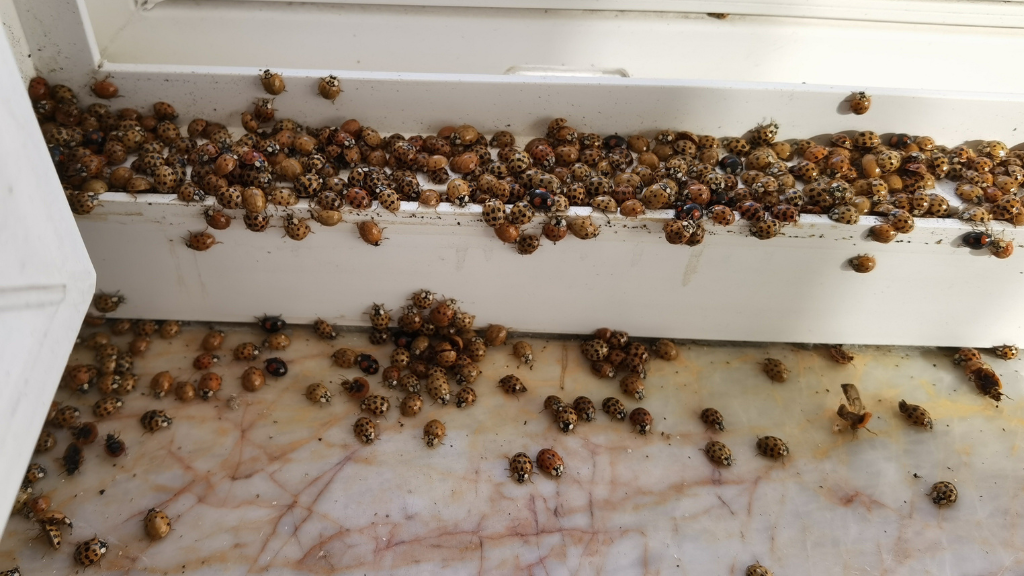
WHY DO I HAVE ASIAN BEETLES IN MY HOUSE?
Asian beetles invade homes and buildings as temperatures drop because the prey they eat begins to disappear in the winter. Sometimes they’re referred to as “Halloween beetles” because of their orange/yellow coloring and because they tend to appear indoors en masse around October.
Asian lady beetles seek shelter in cement cracks, attics, wall gaps, and windowsills where temperatures will remain cool and relatively constant for their dormant period, known as diapause. This seeking of shelter for hibernation is called overwintering, and once they’ve settled in, they will stay for months.
There is a common misconception that Asian beetles seek warmth in the colder months, but in reality, they are cold-blooded insects that rely on cold temperatures in the winter to store their energy reserves. When Asian lady beetles end up indoors, it’s usually by accident, and they’re not able to properly hibernate in these warm interiors.
They may also end up indoors by accident in the spring, after a period of successful overwintering. Rather than crawling back to the outdoors, they crawl indoors and become an interior pest problem.

WHAT SHOULD I DO ABOUT ASIAN BEETLES INDOORS?
If you’ve been bombarded with Asian beetles, you’re probably anxious to get these pests out of your home. Before you start swatting at them or experimenting with other methods, there are a few important do’s and don’ts to keep in mind:
DO CALL A PROFESSIONAL
The first thing you should do if you’re dealing with an Asian beetle invasion is to call your pest control provider. They will be able to get rid of these pests and apply barrier products to keep them out in the future.
DO SEAL ENTRYWAYS
One of the easiest ways to prevent an Asian beetle infestation is to seal your entryways. Fill in any cracks around doorways and windows, and look for gaps in weather stripping as well.
DON’T VACUUM THEM
You might be able to vacuum up some Asian beetles and release them outside, but this can be risky. If they release their defense chemical, your vacuum may become stained and smelly. Also, some vacuums pass debris through a fan before entering the collection chamber—in this case, you would end up with a mess of blended-up beetles.
DON’T SQUISH THEM
Resist the urge to step on or smash these insects. As mentioned above, Asian beetles secrete a foul-smelling yellow blood mixture that can stain your home, so it’s best to collect them without squishing them if possible.
The friendly field experts at Moxie Pest Control are ready to help you get rid of Asian beetles so you can feel secure in your home again. And with regular visits, we can make sure future pests stay away, too. Take advantage of free warranty service calls any time, and contact us today for a free quote.
SOURCES
- https://entomology.ca.uky.edu/ef416
- https://extension.umn.edu/nuisance-insects/multicolored-asian-lady-beetles
- https://ohioline.osu.edu/factsheet/ENT-44
- https://extension.unh.edu/blog/2019/10/how-can-i-get-rid-asian-ladybugs-my-house
- https://www.architecturaldigest.com/reviews/pest-control/are-asian-lady-beetles-harmful
- https://www.ars.usda.gov/news-events/news/research-news/2001/camphor-curbs-asian-lady-beetles/
- https://fruit.wisc.edu/2018/09/07/multicolored-asian-lady-beetle-a-harvest-time-grape-pest/
AUTHOR BIO
Courtney Enzor has worked in the pest control industry for about a decade. From helping you build a fly trap to giving you the best tips for identifying various bugs, she loves answering all your pest-related questions and sharing her pest-related expertise through writing. At the end of the day, she hopes her content will help people avoid mishaps and keep families happy and healthy!

